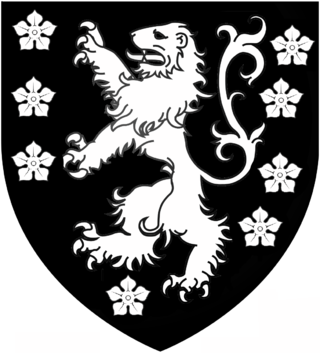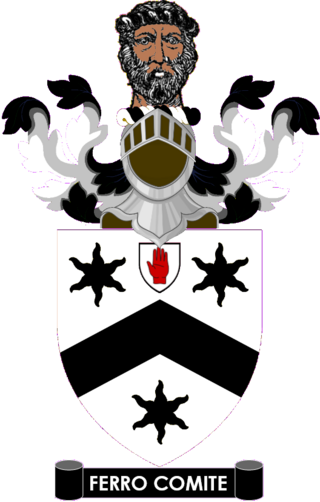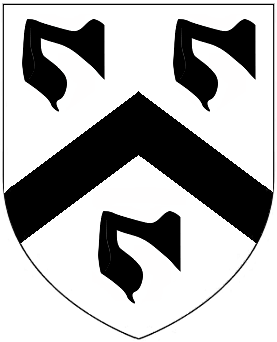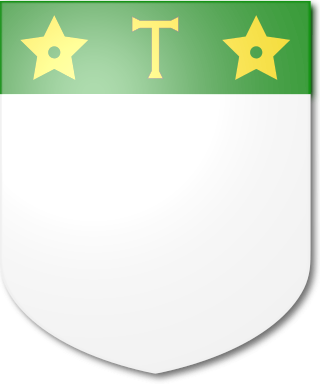
Earl of Buckinghamshire is a title in the Peerage of Great Britain. It was created in 1746 for John Hobart, 1st Baron Hobart.

Baron Berners is a barony created by writ in the Peerage of England.

Earl of Kimberley, of Kimberley in the County of Norfolk, is a title in the Peerage of the United Kingdom. It was created in 1866 for the prominent Liberal politician John Wodehouse, 3rd Baron Wodehouse. During his long political career, he notably held office as Lord Lieutenant of Ireland, Secretary of State for the Colonies, Secretary of State for India and Secretary of State for Foreign Affairs. He was succeeded by his son, the second Earl. At first a Liberal like his father, he later joined the Labour Party, becoming the first Labour member of the House of Lords. His eldest son, the third Earl, represented Norfolk Mid in the House of Commons as a Liberal. Since 2002, the titles are held by the latter's grandson, the fifth Earl.

There have been three baronetcies created for members of the Bacon family, all in the Baronetage of England. As of 2008, one creation is extinct and two of the creations are extant. The extant titles have been merged since 1755.

Baron Clifton, of Leighton Bromswold in the County of Huntingdon, is a title in the Peerage of England. It was created in 1608 for Sir Gervase Clifton, who commissioned Prebendal house which was built by John Thorpe and later owned by the Clifton baronets branch of the family. The peerage was created by writ, which means that it can descend through both male and female lines. Lord Clifton died without surviving male issue and was succeeded by his daughter Katherine, the second Baroness. She married Esmé Stewart, 3rd Duke of Lennox. They were both succeeded by their eldest son James, the fourth Duke and third Baron. When he died the titles passed to his son, the fifth Duke and fourth Baron. On his death in 1660 at the age of 11, the barony separated from the dukedom. The barony was inherited by the late Duke's sister Mary, the fifth Baroness. She married Richard Butler, 1st Earl of Arran, but died aged only 18. She was succeeded by her first cousin the sixth Duke of Lennox, who became the sixth Baron Clifton as well. He was the son of Lord George Stuart, the fourth son of the third Duke and the second Baroness Clifton. On his death, the barony and dukedom again separated.
There have been two baronetcies created for persons with the surname Hobart, one in England and one in the United Kingdom.

Old Buckenham Castle and Buckenham Castle are two castles adjacent respectively to the villages of Old Buckenham and New Buckenham, Norfolk, England.

Sir Thomas Knyvett, of Buckenham, Norfolk was a young English nobleman who was a close associate of King Henry VIII shortly after that monarch came to the throne. According to Hall's Chronicle, Knyvett was a frequent participant in the jousts and pageants of the new king's glittering court and was made Henry's Master of the Horse in 1510.
There have been six baronetcies created for persons with the surname Newton, three in the Baronetage of England, one in the Baronetage of Nova Scotia and two in the Baronetage of the United Kingdom.
There have been four baronetcies created for persons with the surname Temple, two in the Baronetage of England, one in the Baronetage of Nova Scotia and one in the Baronetage of the United Kingdom.
There have been four baronetcies created for persons with the surname Preston, two in the Baronetage of Nova Scotia, one in the Baronetage of England and another in the Baronetage of the United Kingdom.
There have been four baronetcies created for persons with the surname Musgrave, one in the Baronetage of England, one in the Baronetage of Nova Scotia, one in the Baronetage of Ireland and one in the Baronetage of the United Kingdom. As of 2014 two of the creations are extant.

The Mordaunt Baronetcy, of Massingham Parva in the County of Norfolk, is a title in the Baronetage of England. It was created on 29 June 1611 for Lestrange Mordaunt, who had earlier distinguished himself in the Wars of the Low Countries during the reign of Elizabeth I. The fifth, sixth, seventh and eighth Baronets all represented Warwickshire in the House of Commons. The ninth and tenth Baronets sat as Members of Parliament for Warwickshire South.

There have been three baronetcies, all in the Baronetage of England, created for members of the Mansel family, which played a major role in the early re-settlement of the Gower Peninsula, in Glamorgan, Wales. Only one creation is extant as of 2008.

There have been three baronetcies, all in the Baronetage of England, created for members of the Spencer family, both for descendants of two younger sons of Sir John Spencer (1524–1586) of Althorp, Northamptonshire.

There have been two baronetcies created for persons with the surname Drury, one in the Baronetage of England and one in the Baronetage of Great Britain. Both creations are extinct.
The Pettus Baronetcy of Rackheath in Norfolk, England, was a title in the Baronetage of England. It was created on 23 September in 1641 for Thomas Pettus, the High Sheriff of Norfolk. The sixth Baronet was the High Sheriff of Norfolk in 1746. The title became extinct on his death in 1772.
The Kemp Baronetcy, of Gissing in the County of Norfolk, was a title in the Baronetage of England. It was created on 14 March 1642 for Robert Kemp. The second Baronet sat as member of parliament for Norfolk and Dunwich. The third Baronet was member of parliament for Dunwich and Suffolk. The fourth Baronet was member of parliament for Orford. The title became extinct on the death of the twelfth Baronet in 1936.
Knyvett is a surname. Notable people with the surname include:

There have been two baronetcies created for members of the Gawdy family, both in the Baronetage of England. Both creations are extinct.











